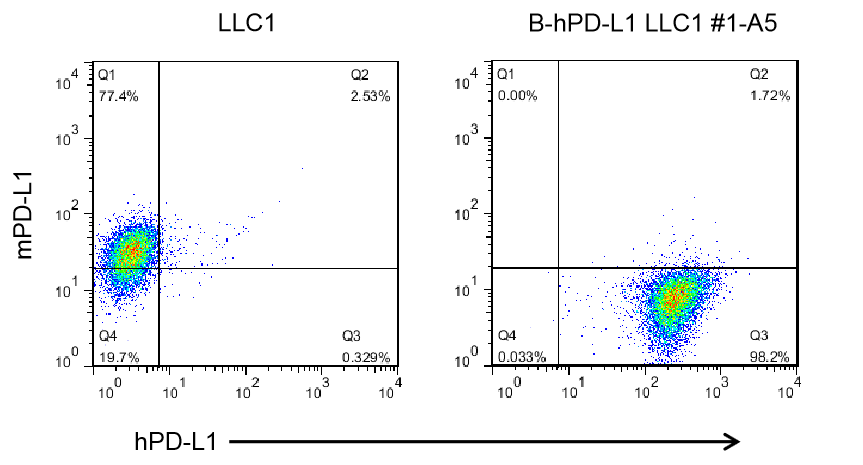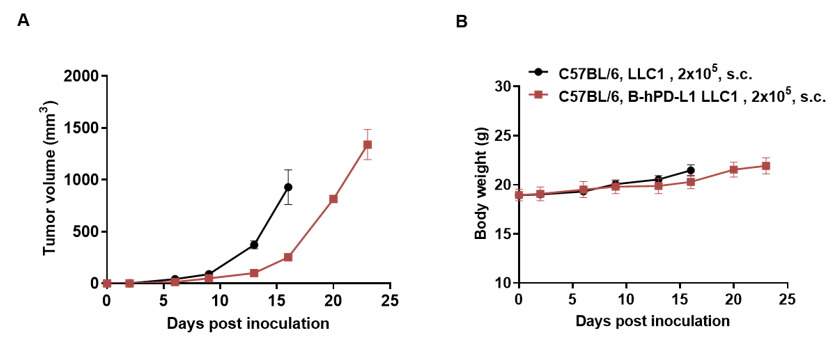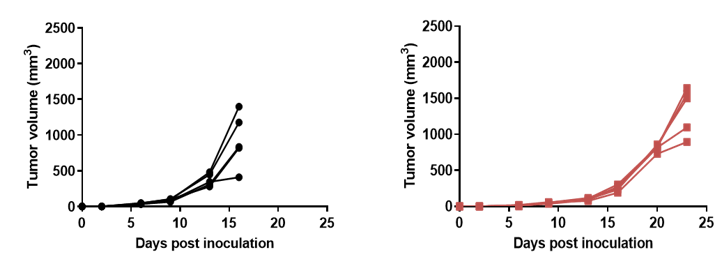|
Common name |
B-hPD-L1 LLC1 | Catalog number |
310686 |
| Aliases | CD274, PDCD1L1 | Disease | Lewis lung carcinoma |
|
Organism |
Mouse |
Strain | C57BL/6 |
| Tissue types | Lung | Tissue | Lung |
Description
The mouse Pdl1 gene was replaced by human PD-L1 coding sequence in B-hPD-L1 LLC1 cells. Human PD-L1 is highly expressed on the surface of B-hPD-L1 LLC1 cells.
Application
B-hPD-L1 LLC1 cells have the capability to establish tumors in vivo and can be used for efficacy studies.
The exogenous promoter and human PD-L1 coding sequence was inserted to replace part of murine exon 3. The insertion disrupts the endogenous murine Pdl1 gene, resulting in a non-functional transcript.
Protein expression analysis

PD-L1 expression analysis in B-hPD-L1 LLC1 cells by flow cytometry. Single cell suspensions from wild-type LLC1 and B-hPD-L1 LLC1 cultures were stained with species-specific anti-PD-L1 antibody. Mouse PD-L1 was detected on the surface of wild-type LLC1 cells. Human PD-L1 was detected on the surface of B-hPD-L1 LLC1 cells but not wild-type LLC1 cells. The 1-A5 clone of B-hPD-L1 LLC1 cells was used for in vivo experiments.
Tumor growth curve & Body weight changes











